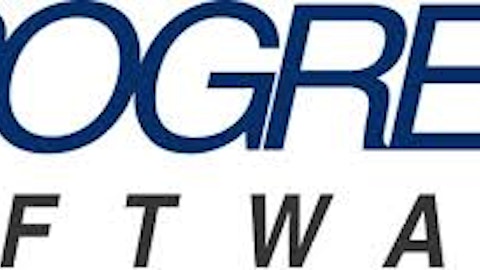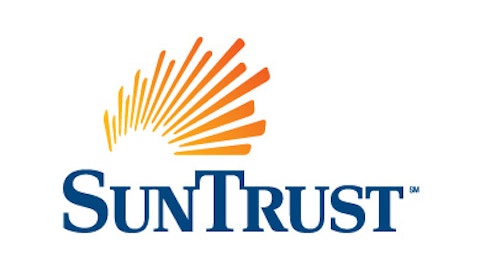Operator
The next question comes from Mike McConnell from Pacific Crest Securities.
Mike McConnell, Pacific Crest Securities
Thank you. Looking at the balance sheet, Stacy, there was a pretty significant spike in receivables in Q-4, and DSOs look like, they are pretty elevated, relative to levels we’ve seen in the last couple of years. Could you explain what was going on there with the receivables?
Stacy Smith, Chief Financial Officer
Sure and actually, I think DSOs still are in a healthy range, but the timing, the quarter was a little bit more back-end loaded than Q-3 was, so we ended the quarter with more receivables. It was as just as simple as that. We started with – we didn’t have a terribly strong October, and the quarter strengthened as we went through.
Mike McConnell, Pacific Crest Securities
Okay, great. And then just looking at linearity for DCG, given you’ve got a new product family, we’ve got an operating system from Microsoft that’s going to be expiring this year. Could you give us any color on how we should expect linearity on a quarterly basis for DCG this year, if it will be any different than what we have seen in the past?
Stacy Smith, Chief Financial Officer
Yeah, I think we always caution you. The PC market, I think, we have data that says it behaves roughly seasonal. With DCG, you have to be careful because you have, you know, 5 to 10 very large cloud customers, that, based on their buying patterns, can really change the quarter to quarter trend, so I tend to hesitate to tie too much to seasonal in DCG. When you look at the results over the course of 2014, it was robust unit growth, it was great revenue growth, 18% revenue growth. As we said in the investor meeting, we think that the underlying trends that are driving that would continue into 2015, and we put a forecast out there that said in excess of 15% growth. That is what we still think.
Mike McConnell, Pacific Crest Securities
Thank you.
Operator
The next question comes from Ambrish Srivastava from BMO Capital Markets.
Ambrish Srivastava, BMO Capital Markets
Thank you, Brian. I just wanted to continue with the question on the mobility side. Based on the drivers that you laid out, should we then expect that the recovery in the operating losses should be more back-end loaded? And then you mentioned that tablets, you expect to grow with the end market, and most, at least I’ll speak for myself, we expect almost no growth. So is that how you guys are thinking about the tablet market? And then I had a quick follow-up for you, Stacy.
Brian Krzanich, Chief Executive Officer
Sure, so let me give you how we view the market and then I’ll let Stacy talk about how the $800 million is laid out through the year, and then you can talk about the margins too. You know, I’ve seen forecasts that are at or near zero, as you say. I’ve seen forecasts that are at slight decline. I’ve seen forecasts that have, I’ll say, you know, 10 to low teen growth in tablets, and it has kind of varied as the 4th Quarter went through. So, that’s why we’ve kind of said that we’ll grow at the rate that the market does. I don’t think I want to necessarily shrink, so unless the market shrinks significantly, I think we would then probably try and target more of a flattish. But in general, you know, I think, saying that we’re going to grow at market tells you I’m not going to try and outgrow the market, is the message I’m trying to send. Whether it’s minus 5, 0, or plus 5 to 10, I call all of that flattish to growing with the market.
Stacy Smith, Chief Financial Officer
Yes, and on the linearity of the $800 million improvement, there are really, at the highest level, three things that are improving our profitability this year. First is bringing SoFIA into the product mix. That helps us both from a standpoint of the SoC cost that SoFIA has and the contra revenue dollars associated with the bill of material offset that we’ve been providing, which we don’t plan to provide with SoFIA. That is back-end loaded. We’re bringing SoFIA into the product family as we speak, but, you know, it becomes really significant volume for us when we get into the back half.
The second one is the ramp of LTE to offset some of the investments we’ve been making there. That ramp is under way now, but I would expect the back half line to be higher than the first half. So that also is a little bit more back-end loaded.
And then the third is, as we’ve said, we’re shifting the investment profile, and that’s more linear across the year, so those are the three items and two of those three do put more of the improvement in the back half.
Ambrish Srivastava, BMO Capital Markets
Okay, thank you, and my quick follow-up for you, Stacy, is on the capital allocation side. Last couple of quarters, you did a great job, brought back a lot of stock, but if I look at the onshore versus offshore on the balance sheet, there’s just a $2 billion delta. Could you remind us in terms of the cash flow generated, how much is onshore versus offshore, and then the ramifications for stock buyback? Thank you.
Stacy Smith, Chief Financial Officer
Sure. It varies year by year, depending on where we’re – remember we actually invest in factories around the world, so, a lot of the onshore versus offshore will vary based on where we’re starting out factories, but the majority of our cash generation is in the US. We do generate a lot of cash. We certainly have the ability to use that for any corporate purposes, including a buyback.
Ambrish Srivastava, BMO Capital Markets
Thank you.





